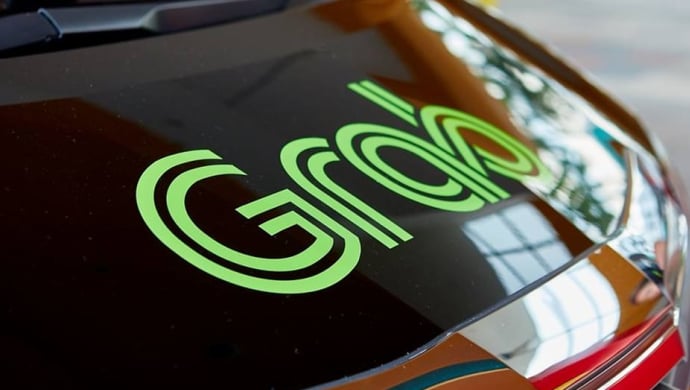
Since GrabFood rolled out its services on April 16, 2019, it quickly went on to dominate Southeast Asia’s food delivery market.
The tech giant managed to quickly capture a large share of the food delivery space by amassing an estimated gross merchandise value (GMV) of US$5.9 billion in 2020, despite the presence of close rivals such as foodpanda (with US$2.52 billion GMV) and gojek (with US$2 billion GMV).
For a customer, the process of ordering and waiting for food does not seem hard, what goes behind the scenes of actually running the platform is surely no easy feat.
In an exclusive webinar hosted by Grab, Xiaole Kuang, Head (Engineering Deliveries) at Grab, gives e27 an insider’s view into what actually goes behind the scenes of running a successful food delivery platform.
Planning
Grab builds and iterates its technology with the goal of delivering a memorable experience to the user, from browsing through the platform to the delivery of the item.
The three key things that Grab has given utmost care to are: 1) how to enable locations at scale (for customers) and how to drive sustainable demand (for merchant partners), and 3) how to protect the eater experience during crunch time (for driver-partners).
Also Read: Understanding the economics of food delivery platforms
Let’s dig deep further into how the tech giant is taking great care in order to provide a pleasant experience to customers, merchants as well driver partners.
For customers
1. Hyperlocalising
Grab is laser-focused on bringing a hyper-local experience for its users across different regions. This is also one of the key strategies that it has adopted that led it to win over the global ride-hailing giant Uber.
To hyperlocalise its content, GrabFood allows respective country teams to customise sections on the app’s homepage to highlight what’s more relevant to their customers based on consumption patterns derived from ordering habits.
No two regions have the same homepage.

2. Recommending alternative options
Like any good restaurant steward would do when a customer is unable to find his/her favourite food by recommending an alternative, Grab does pretty much the same.
Its algorithm is created in such a way that if a user types a dish that is either unavailable or has less than four options, the app finds merchants based on similarities in the menu to offer customers an alternative.
Additionally, the platform also updates the “recommended for you” section with alternative food menus, immediately after a user looks for specific cuisines.
3. Personalisation
Unlike most food delivery apps that recommend restaurants based only on the highest ratings, GrabFood provides personalised recommendations for users.
Its ranking logic is based on factors such as past browsing, ordering history (cuisine/budget/food preferences) and even general factors such as driver availability and estimated time of arrival.
Merchants that most closely match the user’s profile are listed first.
For merchant partners
1. Ease of order handling
Its merchant dashboard not only provides a 360-degree view of all incoming orders regardless of the order type but also enables merchants to keep their restaurant information updated, for example, communicating when an item is out of stock and more.
Additionally, it offers analytics tools on the GrabMerchant app, so that merchants can understand customers’ purchasing behaviours and can create relevant campaigns accordingly.
To sum it up, GrabFood has created an all-in-one platform for F&B business owners to run their online businesses.
2. Point of Scale integration
An example of an open platform tool that GrabFood has created is the Point of Sale (POS) integration, a system that allows restaurant owners to link the POS system used in their own restaurants with Grab.
Before the integration of the feature, merchants had to manually transfer GrabFood orders from Grab’s merchant app into their restaurant POS.
With the integration of the new system, GrabFood orders flow straight into the restaurant’s POS, which means that merchants only need to manage one system, helping them save time and improve accuracy.
3. Providing support
Emphasising with non-tech savvy restaurant owners, Grab understands that the working of its system may not always be crystal clear to merchants.
To solve this, the team has also developed a self-serve system that includes step-by-step guides, testing and debugging tools to help merchants set up POS integration on their own.
For drivers
1. Optimising fleet batching
GrabFood has developed an order batching system to optimise its fleet during peak hours or supply crunch time, for example, when there’s a heavy downpour during dinner time.
This system assigns two or more consumer orders with nearby drop-off or pick-up points for drivers with the aim of completing various orders in one single trip.
2. Optimising fleet-radius reduction
In supply crunch times (when there are too many orders and fewer delivery riders), it is likely that users may have to wait very long for a delivery-rider. Chances of merchants cancelling an order are also higher.
When the driver allocation rate and order completion rate decline, its system kicks in to start gradually reducing the delivery radius.
This helps to concentrate delivery-riders within a smaller area to help improve order completion rates.
Also Read: In brief: Grab to create 350 new jobs in Singapore; Battery Smart raises capital
This is applied until the order completion rate stabilises and more delivery-partners are available in the area.
3. On-time preparation
On average, drivers spend six to eleven minutes waiting at restaurants for merchants to finish preparing their orders. But since preparation habits differ across markets, Grab says, it is still testing out different features to encourage merchants to prepare food more promptly and minimise waiting time for drivers.
—
Image Credit: Grab
The post How a great back-end tech helped GrabFood capture half of SEA’s food delivery pie despite being a latecomer appeared first on e27.

